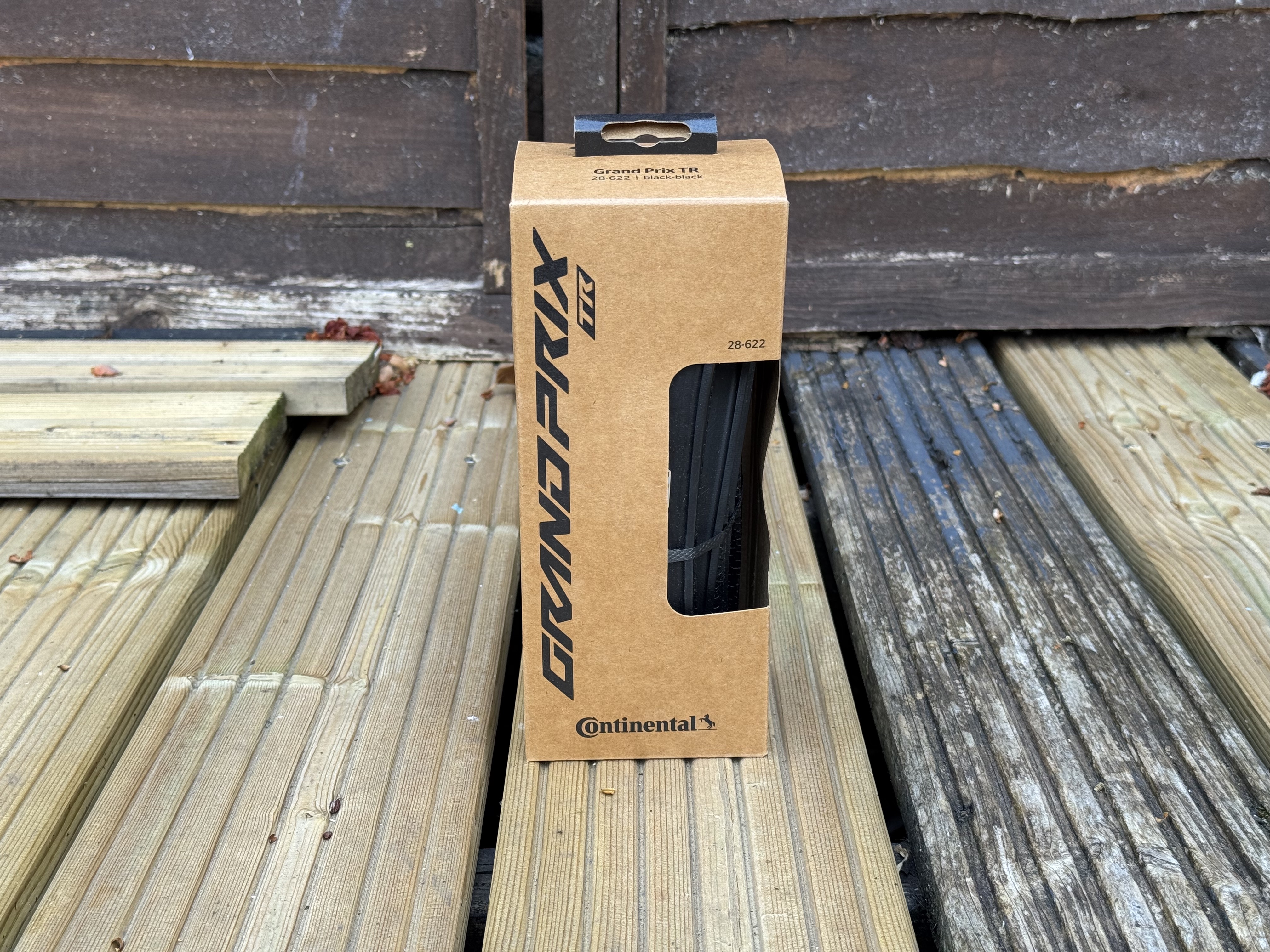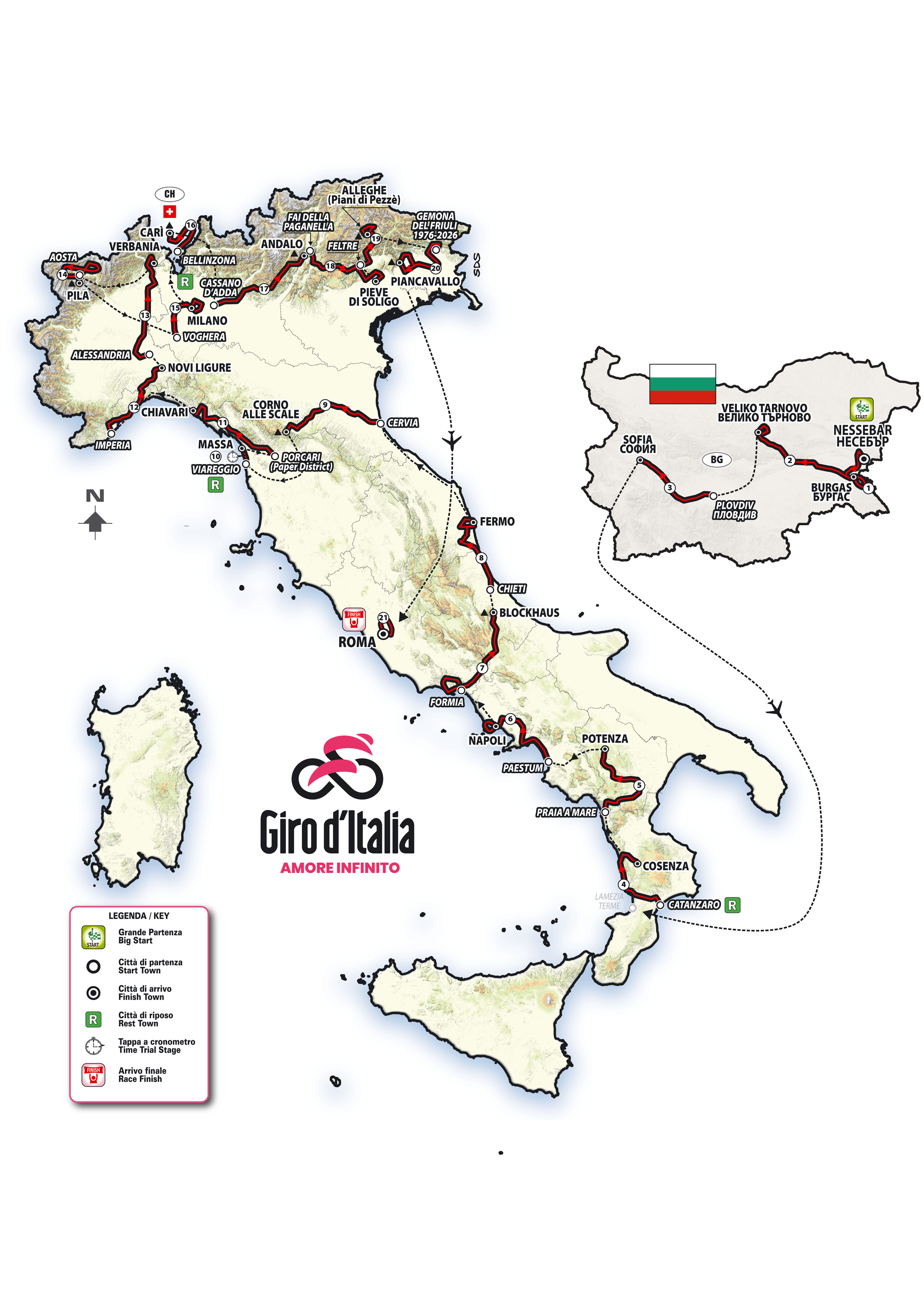Cyclingnews Verdict
Quite frankly, the Grand Prix TR tyres may have become my favourite standard use tyre for road riding in the summer. They feature many of the great performance aspects that make the GP5000 line so great, but cost significantly less money so can be used less sparingly if cost is a factor. However the lack of puncture belt is an oversight.
Pros
- +
The easiest to fit Conti tyres I’ve experienced
- +
Subjectively fast feeling
- +
BlackChili compound is as grippy as ever for confident cornering
- +
Tubeless seals well in the event of a puncture
Cons
- -
On the heavier side but in line with advertised weight
- -
Not many size options
- -
Lack of dedicated puncture belt
You can trust Cyclingnews
- Price: £54.99 / €61.95 / $67.95
- Weight: 340g claimed 346g measured
- Widths: 25, 28, 30, 32c
- Measured: 28mm claimed, 29.25mm measured
- Tubeless: Yes
- Hookless: Yes
- Colours: Black, Tanwall
Brand new for 2025, the Grand Prix TR are Continental’s budget race tyre offering featuring many of the same technologies and features from the incredible GP5000 lineup but for a solid chunk of money off, making them a strong contender for inclusion in our list of the best road bike tyres.
Chief among what has remained is the superb BlackChili compound, which helps contribute to fast rolling tyres that are exceptionally grippy across both wet and dry riding conditions. It’s actually very difficult to qualify any meaningful performance difference between these and the GP5000 range.
A thicker, four-ply construction is used to provide added protection, but doesn’t cause any noticeable lag in rolling. However, the removal of a puncture protection belt does make these tyres more susceptible to thorns, while a heavier weight can impact acceleration.
I found them easy to seal when set up tubeless, and incredibly simple to fit, making them a practical, budget friendly race tyre option.

Design and specifications
The Grand Prix TR is the latest road tyre offering from Continental, and aims to provide a more budget friendly option to the renowned GP5000 range.
On the surface, there are many obvious similarities. The tread is the same BlackChili compound that Continental has used and refined over several iterations of GP4000 and GP5000 tyres. This has been designed and developed to provide good grip in both wet and dry conditions while also being lower rolling resistance, hence its use across the brand’s performance range of tyres. This tread also features a new version of the 'Lazer Grip' shoulder tread that Continental has used on its race tyres, aimed to provide better cornering grip with dispersal of water and deformation of the tread.
Underneath the rubber a four-ply casing is used, the same thickness as the GP5000 AS TR, whereas the S TR and TT versions use a lower ply count for enhanced rolling resistance. Rather than the 120 TPI used in the GP5000 offerings, this is now a 60 TPI, presumably to reduce cost in this better value offering. Part of the reason for this increased ply though is also to enhance puncture protection.
The latest race content, interviews, features, reviews and expert buying guides, direct to your inbox!
Oddly, the Grand Prix TR does not include a dedicated puncture protection belt, whereas all GP5000 tyres save for the TT version have a Vectran Breaker to reduce the chance of thorns puncturing.
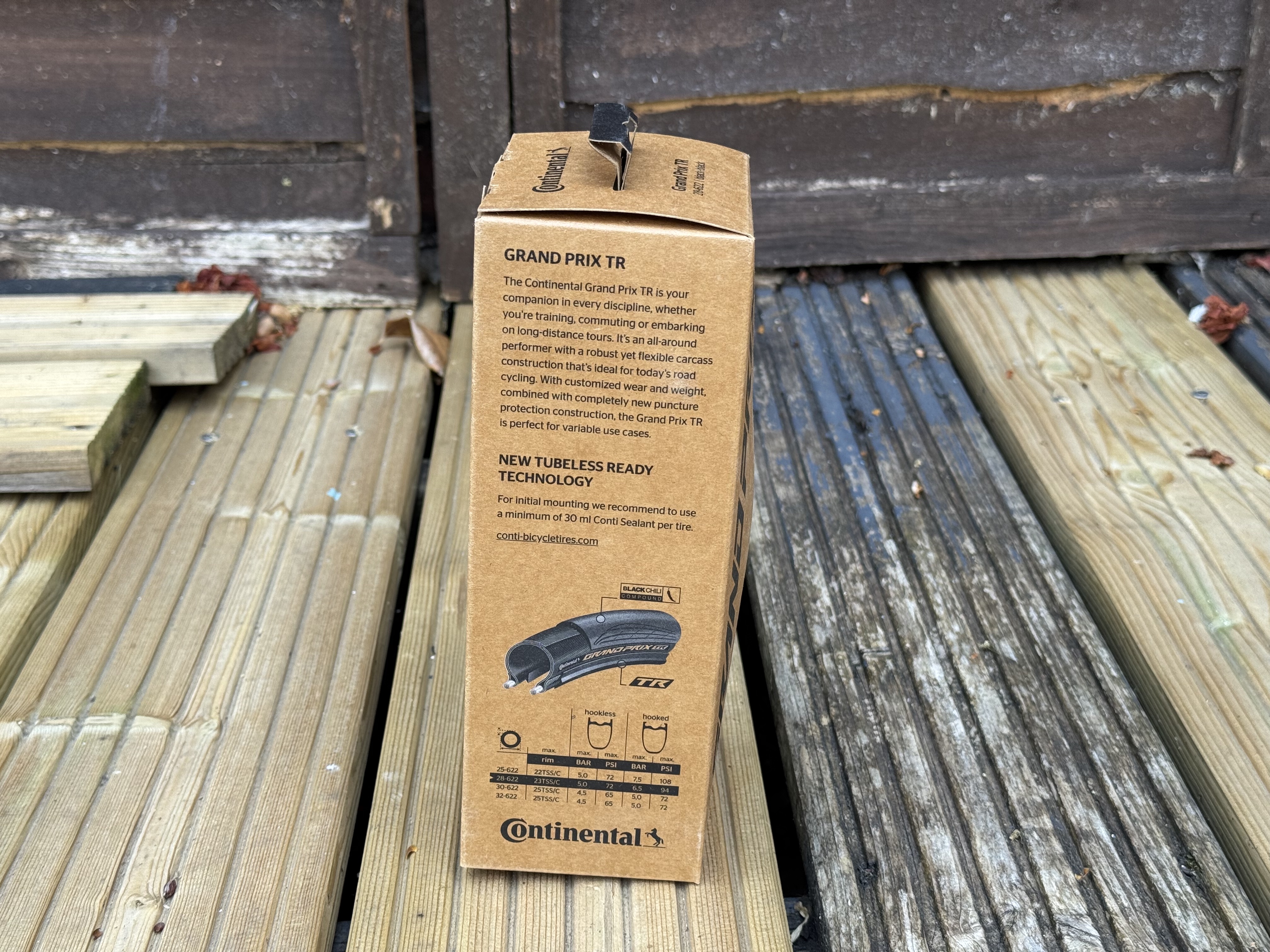
This puts this tyre in an interesting category, as it features some features more commonly found in all-season tyres, but the lack of puncture belt makes it more akin to race tyre offerings. Removing the belt and using four ply of 60 TPI is likely a balancing act of performance, puncture protection, and price. Coming in at £54.99 does mean these undercut the GP5000 (at full RRP) range by at least £25 per tyre, or a full £50 for a set, and puts them only slightly above the price of the likes of the new Vittoria Rubino V.
Width wise they are available in 25, 28, 30 and 32mm offerings in both black and tanwall. Advertised weight for the 28mm offering in black is 340g, while actual weight was a close 346g.
Performance
One of the most noticeable differences between the Grand Prix TR and the GP5000 line, is just how much easier these are to fit in comparison. I have always found that the GP5000 tyres require a good level of stretching, grippy gloves, and levers to get them both on and off the wheel rim. In this instance, using a Shimano 107 wheelset with 21mm internal width, the Grand Prix TR were far easier to get onto the rim and then sealed quickly and easily.
Once fitted onto the rim, these 28mm tyres came up at 29.25mm, reasonably larger than advertised but not hugely so, and certainly nowhere near as oversize as the Pirelli Cinturato Velo I reviewed recently. It does mean in some cases you may need to check your frame for clearances, as on wider rims or wider models, the clearances may exceed what some older generation frames can cope with.
Getting the tyres out on the road for testing, subjectively they do not feel sluggish. Using heavy duty winter tyres such as Gatorskins, those feel obviously slower to the point where a few kph speed difference on average over rides is normal.
The Grand Prix TR by comparison feel no such lag, and based purely on subjective perceptions there really isn’t much between these and the GP5000 offerings. This is backed up to an unscientific extent by the average speed of my rides for given power outputs across a range of weather conditions and terrains. I think it is safe to say that the GP5000 S TR, one of the fastest tyres in our rolling resistance test, is fast. However, the Grand Prix TR is no slouch, and unless you are optimising every aspect of your riding then these are likely sufficiently high performing.
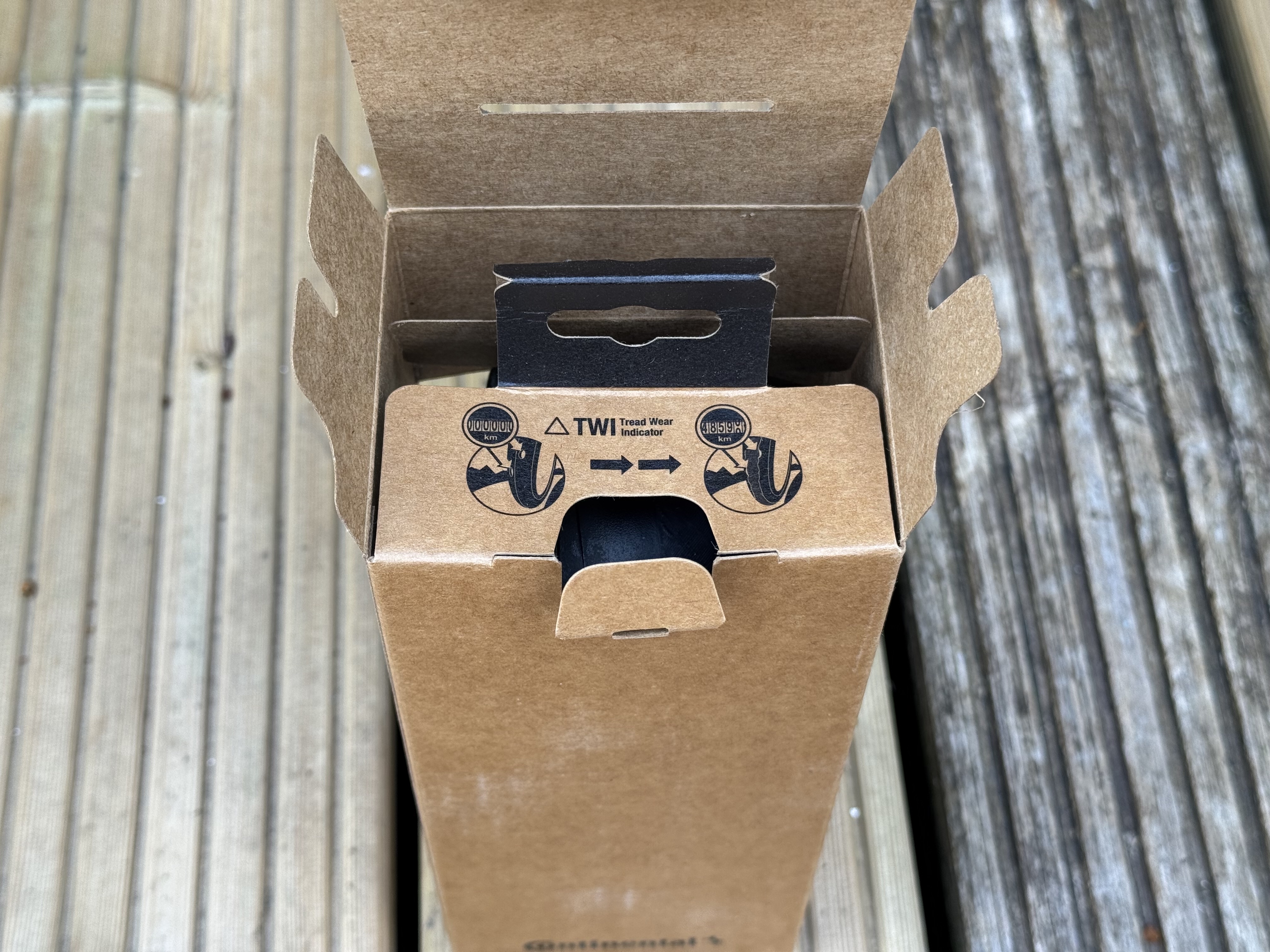
Part of the reason for this speed is likely the use of the BlackChili compound that Continental has refined over the generations. Every tyre from Continental that we tested with this compound was a fast rolling tyre, even the more all-season GP5000 AS TR tyres which were a personal favourite of mine.
Where things differ more is the construction, as the Grand Prix TR uses a four ply construction. Essentially this means that it used four layers of casing to increase the level of durability by reducing the incidence of penetration punctures, but often results in a higher rolling resistance. For reference, the GP5000 TT uses a two ply, the GP5000 S TR a three, and the GP5000 AS TR also a four ply. The ply did appear to correlate quite well with the rolling resistance, with more layers equalling more resistance, however the BlackChili compound still performed well compared to competitors even in the thicker iterations.
The casing itself is also slightly different, as it used a 60 TPI (threads per inch) construction rather than the 120 TPI used in the GP5000 line. Again, this often has a direct impact on rolling resistance, with a higher TPI generally offering lower rolling resistance. It also can have an impact on comfort due to the suppleness of the tyres. I would say that the Grand Prix TR did at times feel the road vibrations and divets a bit more than the likes of the Vittoria Corsa Pro Control with its 320 TPI cotton casing, but not so much as to be a problem.
Another new feature on the tread itself is the updated grip pattern. Continental has long used the Lazer Grip profile on the GP5000 line which it claims improves cornering performance. It looks similar on the Grand Prix TR, and based on testing in both wet and dry conditions, has not done anything to limit the cornering performance of the tyres. In fact I would say that across wet and dry conditions it is hard to find a discernible difference between these and the GP5000 offerings. There may be a marginal difference at the upper limits of cornering grip, but I didn’t try and find that limit. On some wet switchback UK roads however I was able to set some of the fastest times that I have done.



Of course one vital area of tyre performance is how they deal with punctures. The Grand Prix TR don’t appear to have anything like the Vectran Breaker that the GP5000 S and AS TR offerings feature, instead relying purely on the four ply construction. This may explain then why I did get some penetration punctures from thorns going directly into the tread.
It’s slightly surprising given the all-season performance of these tyres that this feature is missing, but potentially this was a way of reducing the costs. Rather than make a very similar tyre to the GP5000 AS TR, make a budget friendly GP5000 S TR with less puncture protection than the dedicated all-season offering. On the bright side, the tread and casing did seal well, and once the thorn was removed the tread appears to have come back together nicely so that I can’t actually find the puncture hole.
In a similar vein of durability, is the lifespan of the tyre. This is an area where I have found that the GP5000 range is not quite as strong, with the exception of the GP5000 AS TR. Quite often after 600+ km I would find that the rear tyre had started to square off and the wear dots be nearing their end. After 500 km or so on the Grand Prix TR, there appears to be a lesser degree of wear, although it is hard to judge. Being a more race focussed performance tyre, it's no surprise that the likes of the Pirelli Cinturato experience less wear, but I would say the Grand Prix TR are on the stronger side in this aspect. Often a benefit of slightly heavier and more substantially treaded tyres.
With that though, these tyres are not the lightest available, at 346g for a 28mm offering, which isn't much lighter than the Pirelli Cinturato Velo 28mm which measured 31.34mm. Add to that the size range is presently a bit limited to 25, 28, 30 and 32mm while the likes of Pirelli and some others are expanding their road offerings to beyond 40mm. The GP5000 AS TR for example in the same size were 335g, while featuring added puncture protection, while Hutchinson’s Blackbird Race tyre which is not much more expensive is 246g. In reality, this was only really noticeable when doing harder efforts or acceleration up steeper inclines, but it is a point worth considering for those wanting to use this as a performance tyre across hillier terrains.
Value
This is always a rather subjective point and a lot of elements need to be considered. On the face of it the Grand Prix TR offers impressively good value when compared to the likes of the GP5000 S TR which retails for £80. The cornering performance in wet and dry is comparable, while rolling resistance feels subjectively good. A higher ply is used the same as the GP5000 AS TR, while weight is similar to that while still being cheaper.
However, both those GP5000 offerings come with a puncture protection belt, which even with tubeless able to seal punctures, you ideally don’t want a 10-20 PSI drop during the sealing process mid ride.
With that lack of puncture belt, the Grand Prix TR are certainly more of a budget race tyre rather than an all-season faster tyre. This then puts them in a similar competitive vein to the Hutchinson Blackbird Race tyres which although are £15 more expensive, come in at around 100g lighter, feature a puncture protection belt. Rolling resistance between the two is hard to compare, at least not objectively without taking them to the lab, but subjectively the cornering performance is not dissimilar.
For a set of tyres however, that is still a £30 difference, or a 21.5% increase in price. When it comes to tyres in the same price bracket that offer tubeless compatibility, then the Grand Prix TR does stand out as an impressive performance focussed tyre, and their value really shines through.
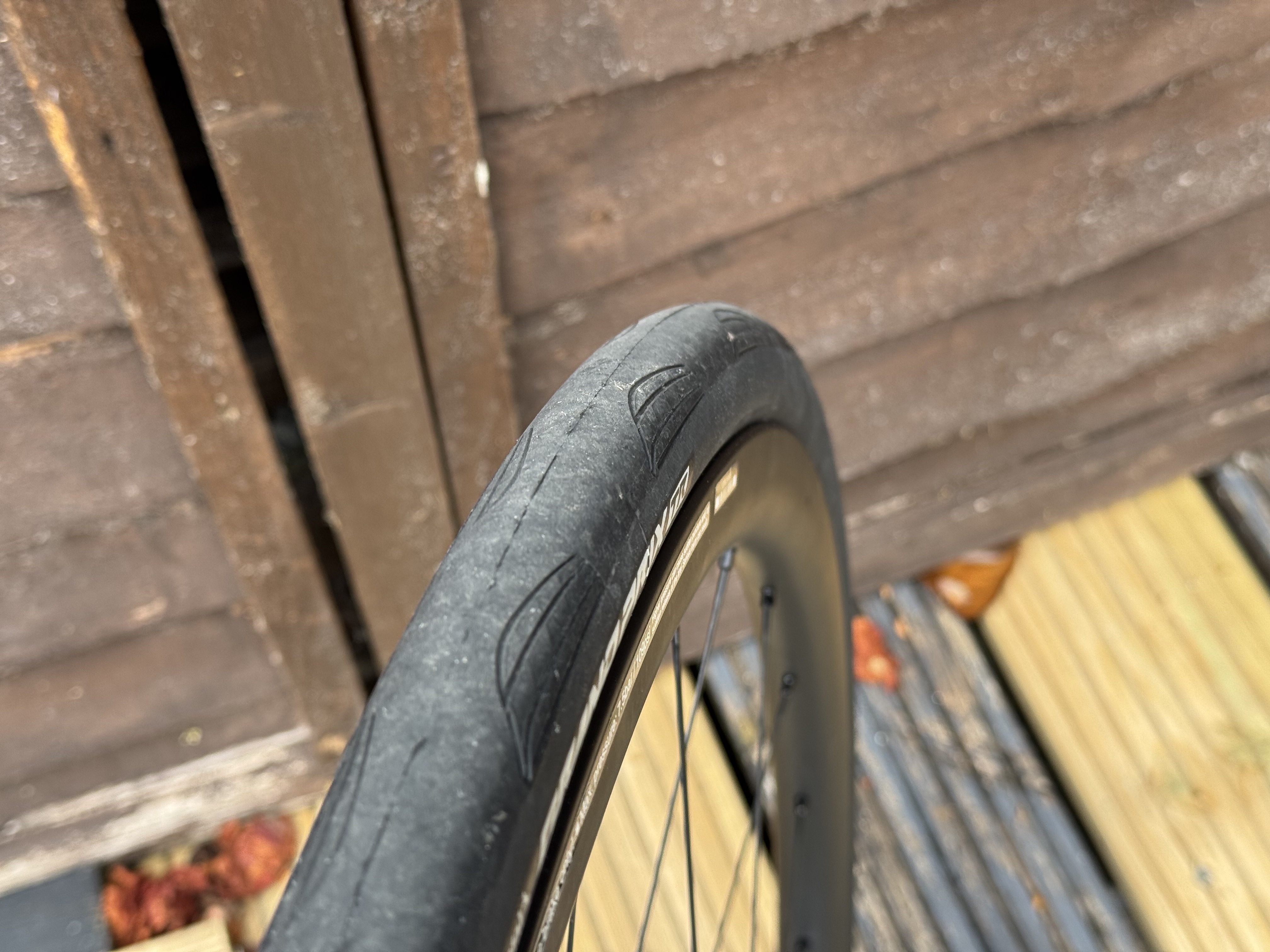
Verdict
The Continental Grand Prix TR are an interesting tyre. They feature many of the same brilliant performance aspects of the GP5000 line that has made those such a popular race tyre, while costing a good percentage less. Both the rolling resistance and cornering performance are subjectively similar to the GP5000 line, which makes their good value even more apparent.
Where things start to differ is the lack of puncture protection belt, meaning that these are certainly more of a summer race tyre, but are still susceptible to punctures. As the saying goes, to finish first, first you must finish. Tubeless does seal well in the event of a puncture, but there is some pressure leak.
For the performance focussed these are also on the heavier side, even when compared to some not massively more expensive race tyres that still feature a puncture protection belt. However, being far easier to setup at tubeless than the GP5000 range, and having comparable performance aspects, does make these a very attractive prospect for those wanting the legendary speed and grip of the BlackChili equipped Conti tyres.
Attributes | Notes | Rating |
|---|---|---|
Design and aesthetics | 25-32mm size range is suitable for most road riders, but dare I say it, lagging behind a bit with more and more brands leaning towards even wider offerings for all-road riding such as Pirelli. Nice to have a black and tan colour offering though. | 8/10 |
Performance | Rolling resistance is subjectively good while cornering performance and wet weather grip have been flawless throughout testing. Lack of puncture belt did prove costly though with a puncture early on in testing. It sealed itself quickly though. | 8/10 |
Tubeless setup | Often Continental tubeless tyres can be quite tough to fit, but the Grand Prix TR are easy to fit without levers and seat easily as well. Up there with some of the easiest tyres to fit as tubeless. | 10/10 |
Weight | The only area where these tyres don’t perform quite so well is weight. There are lighter tyres for a similar price, but very few that combine all performance elements so well without costing significantly more or weighing the same but with lesser performance elsewhere. | 7/10 |
Value | If you want a tyre that can perform well as a race tyre, but don’t want to pay £80-90, these are a super option. It’s very hard to fault these from a performance perspective without even taking into account that they undercut many competitors price wise. The only area where they faulter a bit is the puncture protection and the weight compared to competitors. | 8/10 |
Overall rating | Row 5 - Cell 1 | 82% |

Freelance cycling journalist Andy Turner is a fully qualified sports scientist, cycling coach at ATP Performance, and aerodynamics consultant at Venturi Dynamics. He also spent 3 years racing as a UCI Continental professional and held a British Cycling Elite Race Licence for 7 years. He now enjoys writing fitness and tech related articles, and putting cycling products through their paces for reviews. Predominantly road focussed, he is slowly venturing into the world of gravel too, as many ‘retired’ UCI riders do.
When it comes to cycling equipment, he looks for functionality, a little bit of bling, and ideally aero gains. Style and tradition are secondary, performance is key.
He has raced the Tour of Britain and Volta a Portugal, but nowadays spends his time on the other side of races in the convoy as a DS, coaching riders to race wins themselves, and limiting his riding to Strava hunting, big adventures, and café rides.
You must confirm your public display name before commenting
Please logout and then login again, you will then be prompted to enter your display name.
